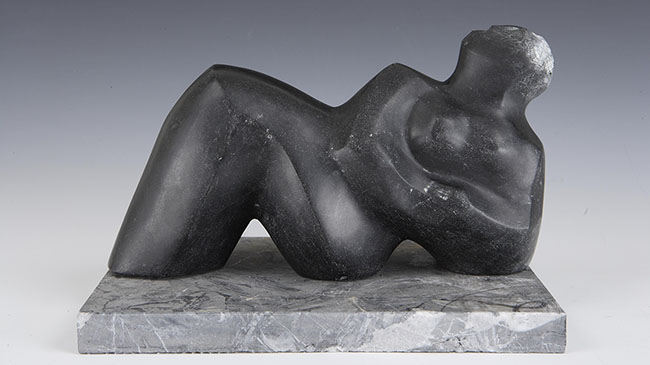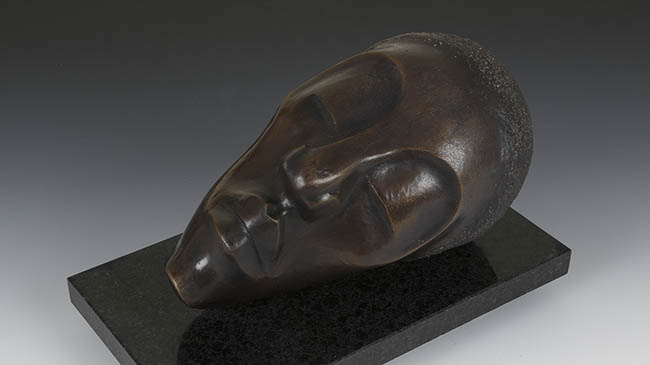By Steven Krolak
(NEW ALBANY, Ind.)–William M. Duffy, an artist and educator who works part time in the IU Southeast Office of Facilities Management, has received the 2019 Bill Fischer Award for Visual Art from Louisville Visual Art and the Community Foundation of Louisville.
Duffy joined the staff of IU Southeast in September, working the early morning shift in University Center, making sure that the common areas are tidy.
The part-time position gives Duffy time to do what he does best: transform raw chunks of stone into powerful works of art in his Louisville studio.
His passion has garnered him considerable acclaim. Duffy’s sculptures have been shown frequently at exhibitions since the 1980s, and have won over 30 purchase or merit awards in venues throughout the country. They can be found in prestigious collections, including the J.B. Speed Art Museum, Louisville Orchestra and Brown-Forman Corporation, among others.

Duffy’s discovery of sculpture has a whiff of destiny.
As a boy of four, while playing in the field next to his home in Louisville, he happened to pick up a stone. He felt its weight and texture, inspected its shape and color. It was a moment of intense focus that became an unforgettable experience.
Years later, while on his way home from work one day, Duffy came upon an auto accident: a car had crashed into the marble column of a building, breaking the rock into pieces. Duffy asked for a chunk, took it home and began to carve, using a screwdriver and a hammer.
Sculpting remained a sideline to Duffy’s main work in drawing and painting, until he attended an exhibition by Paul Fields, whose monumental work, Hope’s Harbor, stands in front of the Ogle Center. Duffy was struck by the expressive power emanating from the three-dimensional figures.

Duffy was struck by the ability of Fields’s work to transcend the laws of physics.
“The stone was solid and heavy, and yet he made it appear light,” Duffy said. “It wasn’t too long after that when I stopped painting, and haven’t done it since.”
The $5,000 Bill Fischer award will enable Duffy to scale up a small basalt sculpture called “Nocturnal Care” to life size (six feet tall).
With this work, Duffy wanted to draw attention to the many emotional and spiritual bonds that fathers develop with their children, beyond their commonly depicted roles of provider and authority figure.
“We don’t see that relationship often in art,” Duffy said. “When we see images like this, I hope it will change the way people look at things.”
As the father of two grown daughters, Duffy draws on decades of connection. But it doesn’t stop there. Beyond his immediate family, Duffy has volunteered to mentor elementary, middle and high school students in drawing and painting.
“My parents always told me that there was always someone helping me, so I should make sure to reach back and help someone else,” Duffy said.
That strong sense of community has animated Duffy’s life. Coming of age at a time when black artists in Louisville were struggling for visibility, he and several friends, including the sculptor Ed Hamilton, formed a group called Montage, and established themselves both as artists and educators.
Duffy admires the work of Henry Moore, Constantin Brancusi and Barbara Hepworth. And he acknowledges the inspiration of friends and colleagues such as Hamilton, G.C. Coxe and Fred Bond.
“My admiration for African, Egyptian, Oceanic, Eskimo and other tribal sculptures influences my work immensely,” Duffy has written. “I try to blend all of the different styles into one universal style that is appealing to all people. My subject matter is also universal, with the intent of portraying the human bond that exists between us all.”
As of this writing, the Kentucky African American History Museum in Louisville’s Portland neighborhood has indicated its desire to purchase the scaled-up sculpture for permanent public display.


